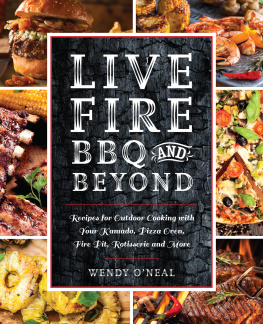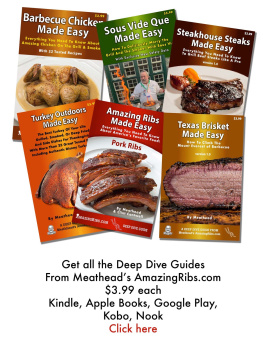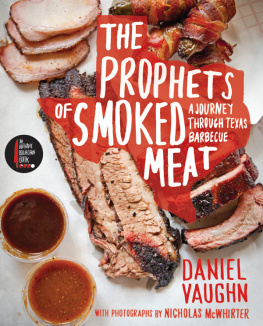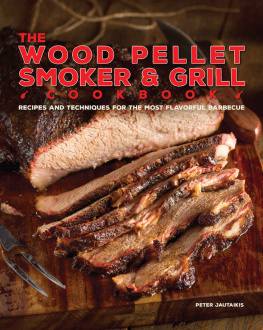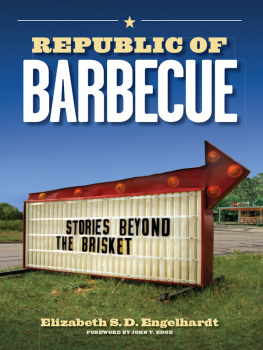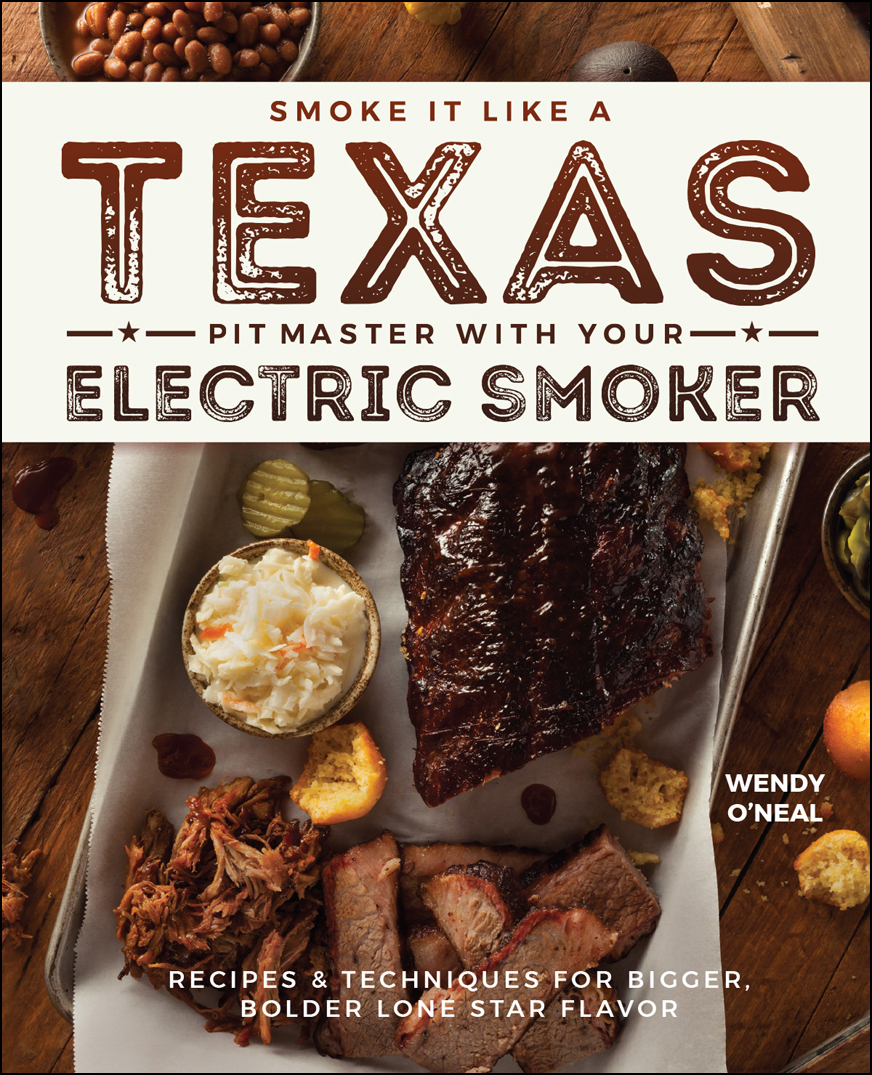
Text and photographs copyright 2018 Wendy ONeal except as noted below. Design and concept copyright 2018 Ulysses Press and its licensors. All rights reserved. Any unauthorized duplication in whole or in part or dissemination of this edition by any means (including but not limited to photocopying, electronic devices, digital versions, and the internet) will be prosecuted to the fullest extent of the law.
Published by
Ulysses Press
P.O. Box 3440
Berkeley, CA 94703
www.ulyssespress.com
ISBN: 978-1-61243-812-2
Acquisitions editor: Casie Vogel
Managing editor: Claire Chun
Project editor: Molly Conway
Editor: Shayna Keyles
Proofreader: Lauren Harrison
Front cover design: Raquel Castro
Interior design/layout: what!design @ whatweb.com
Photographs: Wendy ONeal except on Kate Eschbach
Distributed by Publishers Group West
IMPORTANT NOTE TO READERS: This book is independently authored and published and no sponsorship or endorsement of this book by, and no affiliation with, any trademarked brands or products mentioned or pictured within is claimed or suggested. All trademarks that appear in this book belong to their respective owners and are used here for informational purposes only. The author and publisher encourage readers to patronize the quality brands and products pictured and mentioned in this book. Take special note of the important safety warnings throughout this book, and always use customary precautions for safe food preparation, handling, and storage.
John: Thank you for your unending support and encouragement. And for always doing the dishes.
Contents
Table of Contents
Guide

I was born and raised in Texas, until upper elementary school. I was born in Corpus Christi and lived there until we moved to Amarillo, in the Panhandle, when I was little girl. I lived for summers at my Granny and Bobos lake house in North Texas. Even after we moved to Arizona, I loved going back every summer and visiting my cousins and extended family, eating barbecue and chicken-fried steak, watching rodeos and tractor pulls, and skiing on Lake Arrowhead.
Shortly after I married my husband, I bought him a $50 charcoal smoker and a smoker cookbook, and hes been in love ever since. Weve had cheap smokers, expensive smokers, charcoal smokers, every type of smokerbut my favorite is a good-quality electric smoker. An electric smoker is perfect for hobby cooking. Its easy to use and doesnt require a lot of fuss during the cooking process.
Im a self-taught cook, but I was given a great foundation in outdoor cooking by my dad and in the kitchen by my mom and my Granny. I remember watching cooking shows on PBS when Id get home from school and writing down the recipes as the chefs cooked. I loved learning about new cuisines and discovering kitchen tips, so when the Food Network started, I was in heaven. I couldnt get enough! I had no desire to become a chef; I just wanted to be able to feed my family good food. The kitchen is the heart of the home, and I love bringing family and friends together over a delicious meal.
About Electric Smoking
Over the years, Ive used both electric and charcoal smokers. While some people swear by charcoal smokers, they take a lot of patience and attention. That was perfect for me when I didnt have kids and could sit around watching the meat cook. Charcoal smokers require a more hands-on approach, and more skills and technique. They are standard in traditional Texas barbecue joints.
However, for the last fifteen years or so, Ive used only electric smokers, and I must tell you that I prefer them. Its almost a set-it-and-forget-it sort of cooking, though you still need to add wood chips or baste your meat occasionally. The taste is pretty much the same, because the fact is that its the wood chips that infuse the meats with flavor, not necessarily the charcoal. Texas barbecue can be easily made at home with an electric smoker, and its still mouth-wateringly delicious.
Smoking is a low-and-slow cooking process, very different from grilling. Smoking temperatures are usually between 200F to 275F, compared to the high heat typically used for grilling (over 400F). Smoking uses low heat and the meat is generally farther away from the heat source, resulting in a much longer cooking time.
Cooking times will vary slightly according to the size, shape, and cut of the meat and how often you open the smoker door to check in. Opening the door lets out heat and the electric smoker must come back up to the programmed temperature after the door is closed, which increases cooking time.
Smoking isnt just limited to meatvegetables, breads, desserts, nuts, and even cheese are great in the smoker too. However, Texas barbecue is pretty much limited to beef, pork, and chicken.
Electric Smoker Features
Buying an electric smoker doesnt have to be scary or cost a fortune. There are good-quality electric smokers available for around $200. Ive used different brands and models over the years, and Ive found Masterbuilt and Char-Broil smokers to be of good quality and affordable. For me, I prefer a Masterbuilt Digital Electric Smoker. Other well-known brands include Bradley, Smoke Hollow, and Smokehouse.
Electric smokers are vertical smokers with multiple shelves that allow you to cook a lot of food at once. Get a smoker with the largest cooking capacity that you can afford. That way youll be able to smoke multiple things all at once and not be limited by space. Here are some options to consider when purchasing your electric smoker:
Glass door vs. solid door. Glass doors look great on the showroom floor and in pictures online, but my experience is that after a couple of uses, the smoke buildup on the glawss is so thick that you cant see through it.
Digital vs. analog. Both are great. An analog electric smoker has fewer parts to malfunction, but digital allows for setting precise temperatures and cooking times. If a digital smoker is in your future, get one that also has a remote control. That way, if the controls on the unit happen to malfunction, you can just use the remote. Plus, you can check temperatures and times from the comfort of your home.
Stands or legs. These are more of a luxury than a necessity. They raise the smoker off the ground for easier access and they allow for air circulation under the smoker. Both can be purchased aftermarket if you decide you want them.
Temperature probe. Again, this isnt necessary, but a good probe will help take the guesswork out of deciding when the food is fully cooked. This item can also be purchased aftermarket.
Before You Smoke
Most electric smokers come fully assembled, unless they have a stand or legs. After youve removed all the packaging and cleaned the racks, trays, and pans with soap and water, youll need to season the smoker before you begin using it for food. Seasoning the smoker burns off any chemicals, grease, metal shavings, cardboard, or residues from the manufacturing and packaging process. This process also seals the smoker and bakes on the paint.
Seasoning times vary according to the brand and model, so refer to your specific electric smokers user manual. For my Masterbuilt, the instructions say to heat the smoker to 275F for 3 hours with a dry water pan in place, adding wood chips once during the last 45 minutes. Then, turn off the smoker and let it cool completely. Some smokers require you to rub a light layer of oil inside the smoker before seasoning it.


